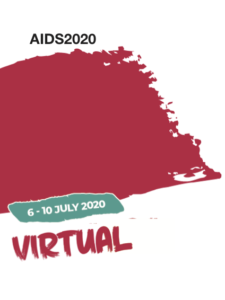Dolutegravir non-inferior to efavirenz at week 96 in the NAMSAL study but associated with substantial weight gain
28 August 2020. Related: Conference reports, Treatment strategies, World AIDS 23 Virtual 2020.
 Polly Clayden, HIV i-Base
Polly Clayden, HIV i-Base
Week 96 results from NAMSAL confirmed non-inferior efficacy of dolutegravir (DTG)- vs efavirenz (EFV)-based ART reported at week 48 and no emergence of DTG resistance. [1]
Virological suppression remained lower in participants with a high baseline viral load (across both study arms). There was continuous weight gain in the DTG arm. These results were presented at AIDS 2020.
NAMSAL (ANRS 12313) is a phase 3 randomised, open label, multicentre study conducted at three sites in Yaoundé, Cameroon. ART-naive adults with viral load >1000 copies/mL were randomised to DTG 50 mg or EFV 400 mg once daily, both with tenofovir disoproxil fumarate (TDF)/lamivudine (3TC).
The primary endpoint was the proportion of participants with <50 copies/mL at week 48 and week 96 (10% non-inferiority margin). Week 48 data showing non-inferiority of DTG were reported previously. [2] At this timepoint a notably fewer participants with >100,000 copies at baseline achieved viral suppression <50 copies/mL compared with those with <100,000 copies/mL.
A total of 613 participants were randomised, received at least one dose of study drug and were included in the ITT analysis: 310 DTG arm and 303 EFV 400 mg arm.
Participants were a median of 36 years old, 68% were women and baseline BMI was 23 kg/m2. There were no differences between the treatment arms.
At week 96, the proportion of participants with viral load <50 copies/mL was 73.9% (229/310) and 72.3% (219/303) respectively: difference 1.6% (95% CI -5.4 to 8.6), p=0.66.
The differences in suppression observed at week 48, when stratified by viral load, persisted.
Among participants with <100,000 copies/mL at baseline, 80.6% (83/103) in the DTG arm and 82.5% (85/105) in the EFV 400 mg arm achieved viral suppression, compared to 70.5% (146/207) and 67% (134/200) of those in the respective arms with baseline viral load >100,000 copies/mL.
For participants with baseline viral load >500,000 copies these respective proportions were 66.7% (62/93) and 70.5% (67/95) in the DTG and EFV 400 arms.
At week 48, 15 participants in the EFV 400 mg and none in the DTG arm had NNRTI and NRTI resistance. By week 96, a further six participants had developed resistance. Of these three participants in the DTG arm had been switched to EFV 400 mg following the 2018 WHO safety alert on periconception DTG.
Weight gain observed at week 48 persisted. At week 96 this increase was 6.7 kg in the DTG arm and 4.2 kg in the EFV arm, p<0.001.
By week 96, weight gain >10% occurred in 45% of participants in the DTG arm (increasing from 38% at week 48) and 33% (from 29%) among those in the EFV arm, p=0.004. Obesity incidence was 22% and 16% in the respective arms. Weight gain was more pronounced in women than men.
There were 58 (19%) and 46 (15%) adverse events reported in the DTG and EFV arms, respectively.
Among the 404 women receiving ART in the study there were 62 pregnancies: 27 and 35 in the DTG and EFV arms, respectively. Fourteen pregnancies were ongoing at the time of analysis. There was no vertical transmission among the 26 live births.
The investigators concluded that these data confirm the non-inferiority of DTG vs EFV but DTG is associated with substantial and continuous weight gain.
Reference
- Kouanfack C et al. Dolutegravir- versus low-dose Efavirenz-based regimen for the initial treatment of HIV-1 infection in Cameroon: Week 96 results of the ANRS 12313 – NAMSAL trial. AIDS 2020 virtual. 6–10 July 2020. Oral abstract OAB0402.
https://cattendee.abstractsonline.com/meeting/9289/presentation/791 - Clayden P. Dolutegravir non-inferior to low dose efavirenz in real-life African study conducted in Cameroon. HTB. (13 November 2020).
https://i-base.info/htb/35235
This article was originally posted on 20 August 2020.

